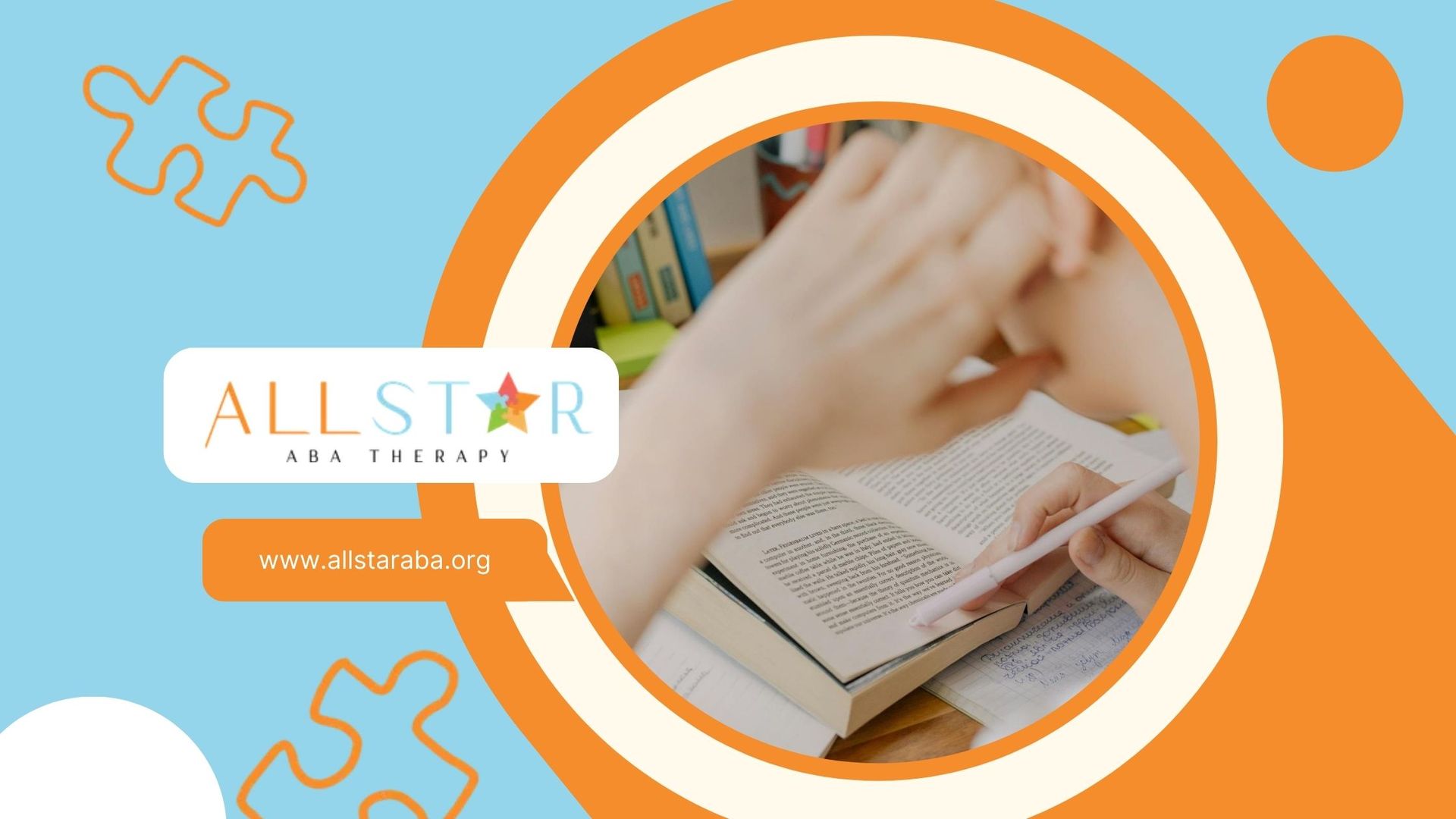New Paragraph
Personalized NETA Programs in ABA: How to Maximize Your Child’s Learning Potential
When it comes to teaching children with autism or other developmental challenges, one size doesn’t fit all. That's where individualized NETA programs come into play. Natural Environment Teaching (NET) is an evidence-based approach that thrives when personalized to the unique needs of each child. By incorporating real-life experiences and everyday settings, these programs allow children to develop skills that can be applied across a variety of environments, from home to school to the community.
In this article, we’ll explore how individualized NETA programs can transform learning experiences, focusing on how personalized goals and strategies can promote independence, social skills, and behavior improvement. Tailoring learning to fit your child’s unique strengths and challenges ensures that the skills they develop are both meaningful and transferable to real-life situations.
Navigating Natural Environment Teaching
Understanding the Concept of Natural Environment Teaching
Natural Environment Teaching (NET) is an evidence-based approach grounded in Applied Behavior Analysis (ABA) that emphasizes learning in real-life contexts. This method encourages you to facilitate learning opportunities within everyday settings, allowing your child to engage with their environment in meaningful ways. By using typical, familiar surroundings, you create authentic situations in which skill development can occur naturally.
In NET, the goal is to promote adaptive skills by integrating instruction into routine activities. This might include activities like grocery shopping, playing in the park, or engaging in household tasks. The focus is on teaching skills that are applicable and useful in everyday life, thereby increasing your child's independence and confidence.
Importance of Individualized NETA Programs
Individualized NETA (Natural Environment Teaching Approach) programs are essential for meeting the unique needs of each child. Every child has different strengths, challenges, and preferences, making it vital to tailor learning experiences accordingly.
An individualized approach means that you can focus on specific goals that align with your child’s interests and developmental level.
Key benefits of individualized NETA programs include:
- Enhanced Engagement: Children are more likely to participate and learn when activities are aligned with their interests.
- Improved Skill Generalization: Skills learned in natural settings are more easily transferred to other situations, leading to greater independence.
- Personalized Goals: Individualized programs allow for setting specific, measurable objectives tailored to your child’s unique needs.
- Collaborative Approach: Involving parents, therapists, and educators in crafting the program fosters a cooperative effort in supporting the child's growth.
By focusing on individualized NETA programs, you create an opportunity for your child to thrive in a setting that respects their individuality and enhances their learning potential.
Components of Individualized NETA Programs
Creating effective Individualized NETA (Natural Environment Teaching Approach) programs involves careful consideration of both learning objectives and teaching strategies. Here, you will explore how to personalize these elements to fit the unique needs of each child.
Personalizing Learning Objectives
Personalizing learning objectives is essential to ensure that each child receives targeted instruction relevant to their specific abilities and challenges. This process requires you to consider the child’s interests, strengths, and areas for growth.
- Identify Specific Skills: Determine the skills you want to focus on, such as communication, social interaction, or self-help skills.
- Use Measurable Goals: Make objectives specific and measurable. For example, instead of saying "improve communication", specify "increase use of 5-word sentences in 80% of interactions".
- Incorporate Interests: Engage your child by incorporating their preferences into objectives. This can encourage motivation and participation.
| Skill Focus | Example Objective |
|---|---|
| Communication | Use 5-word sentences in 80% of interactions |
| Social Interaction | Initiate play with peers 4 times a week |
| Self-Help Skills | Dress independently for 3 out of 5 days |
Tailoring Strategies to Individual Needs
Once you have personalized the learning objectives, the next step is to tailor your teaching strategies to meet individual needs. Each child may respond differently to various methods, so flexibility is key.
- Utilize Contextual Learning: Implement strategies in natural settings, such as at home or in the community, where the child is comfortable.
- Incorporate Visual Supports: Use visual aids like charts or pictures to enhance understanding and retention of information.
- Engage in Play-Based Learning: Create instructional opportunities through play, thereby fostering a natural and enjoyable learning environment.
By personalizing learning objectives and tailoring strategies to individual needs, you can enhance the effectiveness of individualized NETA programs. Focused instruction will help support children in achieving their developmental milestones.
Implementing NETA Programs
Implementing individualized NETA programs requires careful planning and execution. You must set up the environment to facilitate growth and learning while employing effective teaching strategies.
Setting Up the Environment for Success
Creating an optimal environment is key to the success of Natural Environment Teaching. Consider the following elements when establishing your setting:
- Familiar Spaces: Use environments where the child feels comfortable. This could be home, the yard, or other familiar locations.
- Accessible Materials: Ensure that resources and learning materials are readily available and easily accessed.
- Minimize Distractions: Reduce noise and clutter to help the child focus during learning activities.
- Structured Flexibility: Establish a routine that provides predictability while allowing for spontaneous learning opportunities.
- Engaging Activities: Incorporate activities that are interesting and meaningful to the child. Use items or scenarios that capture attention and resonate with their interests.
Strategies for Effective Teaching and Reinforcement
Implementing effective teaching and reinforcement strategies is essential when working with individualized NETA programs. Here are some strategies to consider:
- Naturalistic Teaching: Incorporate learning into everyday activities. Use moments in daily routines to introduce new skills or concepts.
- Prompting Techniques: Use various prompting strategies that suit the child’s needs. This may include verbal prompts, gestural prompts, or visual aids.
- Positive Reinforcement: Reinforce desired behaviors or learned skills with immediate and appropriate rewards. This could be verbal praise, a preferred activity, or tangible items.
- Modeling Behavior: Demonstrate the desired skills or behaviors clearly so the child can observe and imitate them.
- Feedback Loop: Provide consistent feedback. This guidance helps the child understand their progress and areas for improvement.
By establishing a supportive environment and implementing effective strategies, you can enhance the effectiveness of individualized NETA programs. These methods create meaningful learning experiences that are tailored to the unique needs of each child.
Monitoring Progress and Adjusting
In individualized NETA programs, monitoring progress and making necessary adjustments are vital for achieving effective outcomes. It allows you to track the child's development and ensures that the strategies employed are meeting their unique needs.
Tracking and Assessing Developmental Milestones
You should regularly track and assess developmental milestones to understand the child's progress within the individualized NETA programs. This involves observing specific skills that have been targeted for improvement and documenting advancements over time.
Common developmental milestones to monitor can include communication skills, social interactions, and daily living skills. Keeping a consistent record enables you to identify areas of progress and areas that may require further focus.
| Milestone Category | Example Skills | Assessment Frequency |
|---|---|---|
| Communication | Vocabulary expansion | Weekly |
| Social Interaction | Peer engagement | Bi-weekly |
| Daily Living Skills | Independent dressing | Monthly |
Regular assessments provide insight into the effectiveness of the strategies employed and help maintain a clear picture of the child’s growth.
Modifying Programs Based on Progress
As you monitor progress, it’s important to be flexible and ready to modify programs based on the child's changing needs and developmental achievements. Customizing the individualized NETA programs ensures that they remain relevant and effective.
Modification strategies can include adjusting learning objectives, changing teaching methods, or providing additional support. If the child excels in a certain area, consider introducing more complex tasks to foster their ongoing development. Conversely, if a skill is proving challenging, simplifying the approach or providing more time for mastery may be beneficial.
Steps for modifying programs include:
- Review recent assessments and observational data.
- Identify specific areas of need for enhancement.
- Adjust objectives and strategies based on this analysis.
- Implement changes consistently and monitor their impact.
By actively tracking progress and making appropriate adjustments, you can enhance the effectiveness of individualized NETA programs and support meaningful growth for the child. This iterative process ensures a responsive and tailored approach that aligns with the dynamic nature of their learning needs.
Collaboration in NETA Programs
Building a successful individualized NETA program requires effective collaboration among all parties involved. This includes actively engaging parents, caregivers, therapists, and educators to create a comprehensive support system.
Involving Parents and Caregivers
Parents and caregivers play a vital role in the success of individualized NETA programs. Their insight and intimate knowledge of their child's behavior, preferences, and environment are invaluable. Involving them ensures that the program remains relevant and tailored to the child’s specific needs.
Key strategies for involving parents and caregivers include:
- Regular Communication: Establish open lines of communication to share updates, concerns, and successes.
- Training Opportunities: Provide workshops or resources to help them understand the principles of natural environment teaching and how they can implement strategies at home.
- Feedback Mechanism: Create a system for parents to share their observations and feedback regarding their child's progress.
Working with Therapists and Educators
Collaboration with therapists and educators is crucial when creating and implementing individualized NETA programs. Their expertise can enhance the effectiveness of the strategies you employ.
Consider the following approaches:
- Joint Planning: Involve therapists and educators in the initial planning stages of the NETA program to identify goals and effective strategies.
- Shared Resources: Encourage the sharing of tools and materials among all parties to create a consistent approach.
- Consistent Monitoring: Establish a schedule for regular meetings among parents, therapists, and educators to discuss progress, adapt strategies, and address any challenges.
By working together, you create a supportive team dedicated to your child’s development, ensuring that individualized NETA programs are successful in fostering learning and growth in natural environments.
Conclusion
In conclusion, individualized NETA programs are a transformative approach to teaching children in ways that are meaningful and relevant to their daily lives. By focusing on the child’s unique needs, interests, and strengths, these programs promote lasting behavioral changes and skill generalization across various settings.
The power of personalization ensures that each child’s learning journey is both effective and enjoyable, creating opportunities for success and independence.
If you’re interested in implementing an individualized NETA program for your child, All Star ABA is here to support you. We specialize in personalized ABA therapy services in Maryland, including bilingual support for diverse families. Our team of experienced professionals is dedicated to helping children reach their full potential with customized, evidence-based therapy.
Get in touch today to learn how we can help your child thrive with a tailored NETA program.
FAQs
What are individualized NETA programs?
Individualized NETA programs are tailored learning plans that use the Natural Environment Teaching method, focusing on real-world scenarios and environments. These programs are personalized to each child’s unique strengths, interests, and developmental goals, ensuring the most effective learning experience.
How do individualized NETA programs help children with autism?
These programs promote skill development by teaching in everyday settings, such as home, school, and community spaces. By aligning learning activities with a child's interests, individualized NETA programs foster engagement and increase the likelihood of skill generalization, helping children apply what they’ve learned in various contexts.
Can individualized NETA programs be adapted as the child grows?
Yes! As children progress, individualized NETA programs can be adjusted to meet their evolving needs. By regularly monitoring progress and making necessary modifications, these programs ensure that children continue to learn at their own pace while advancing to more complex skills.
Need Support?
We're Here to Help!
Our experienced team is ready to assist you. Reach out today to discuss how we can support your child's development and well-being.
Get started with expert ABA therapy today.
Related posts

All Star ABA delivers the gold standard of care, Applied Behavioral Analysis (ABA) therapy, for individuals diagnosed with ASD, from infancy to age 21.
Quick Links
All Rights Reserved | All Star ABA







